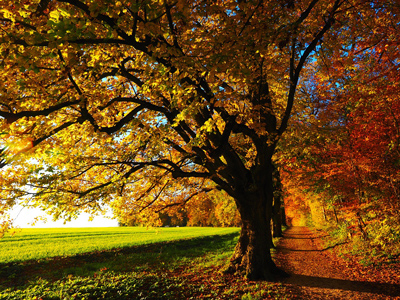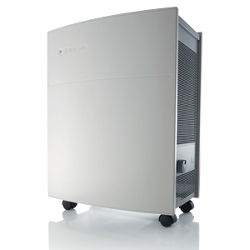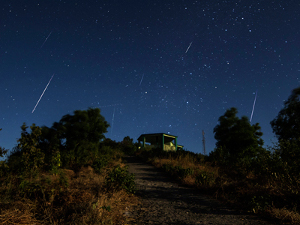 With October quickly drawing to a close, there are a few news and notes worth mentioning. For people with allergies and asthma, ragweed is wreaking havoc, particularly in the south. Drier conditions have helped to create an ideal situation for ragweed pollen, one of the lightest and most buoyant, to spread far and wide. This isn’t the only fall allergen to be creating problems. Sagebrush and cedar/juniper pollens, predominantly in the south and southwest are also high. These are some of the most common of all fall allergens, causing allergic rhinitis, more commonly known as hay fever.
With October quickly drawing to a close, there are a few news and notes worth mentioning. For people with allergies and asthma, ragweed is wreaking havoc, particularly in the south. Drier conditions have helped to create an ideal situation for ragweed pollen, one of the lightest and most buoyant, to spread far and wide. This isn’t the only fall allergen to be creating problems. Sagebrush and cedar/juniper pollens, predominantly in the south and southwest are also high. These are some of the most common of all fall allergens, causing allergic rhinitis, more commonly known as hay fever.
Typified by sneezing, coughing, congestion, swollen sinuses, and/or a runny nose, hay fever is common during the fall months, just as during the spring. While medications can relieve many of the symptoms associated with hay fever, keeping your home free of these allergens isn’t as difficult as you might thing. Here are four quick 2015 fall allergy tips on keeping these allergens out of your home and out of your indoor air.
2015 Fall Allergy Tips
- Change the Furnace Filter – Once pollen gets in your home, it can circulate throughout the home via your HVAC/furnace. With temperatures dropping at night, many of us are firing up the furnace for the first time this year, and now is the perfect time to swap our furnace filter if you’ve been putting it off. You can hire experts that provide furnace check up in Oro Valley, AZ or companies like these heating services in Milford, MA.
- Close the Windows – As tempting as it is the let a brisk fall breeze in, it can carry with a lot of ragweed pollen. As one of the lightest allergic pollens, ragweed can travel far on
 even a light breeze, and keeping the windows open is literally inviting it in.
even a light breeze, and keeping the windows open is literally inviting it in. - Use a HEPA Air Purifier – Particularly in the bedroom, removing allergens in the air in your home is a good strategy to feel better. Since most of us typically spend more time in the bedroom than any other room in the home, it’s the ideal place to use a HEPA air purifier. Blueair air purifiers are well suited for bedrooms on any size in that they provide better than HEPA particle filtration while using very little power and can operate in near silence.
- Use an Allergy Mask – These come in all shapes and sizes, but all do the same thing, block allergens. From a simple dust mask or a HEPA respirator to plain white or a unique pattern, there’s a wide variety of allergy masks available that can block pollen and mold spores whether you running, walking, biking, or doing yard work outdoors.
Want to learn more? Visit our Ragweed Allergy FAQ page.
Food Allergies – Halloween
Speaking of masks, Halloween is almost upon us! When I was a kid, I loved Halloween – got to dress up, tons of candy, even the occasional homemade caramel apple or popcorn ball. I still enjoy it, but I find that the multiple bags of candy I buy before Halloween often disappear well before that hallowed eve arrives.
While many of the homemade treats have fallen out of favor, even prepackaged ones (like a full size candy bar… hint, hint…) can create problems for kids with food allergies. As parents, you can rightly  plunder ye child’s nightly haul (I won’t blame you), but many have taken a slightly different approach with the Teal Pumpkin.
plunder ye child’s nightly haul (I won’t blame you), but many have taken a slightly different approach with the Teal Pumpkin.
Many parents with food allergies and food allergy advocates have created the Teal Pumpkin as a way to still indulge trick or treaters but without the edible treats. The premise is pretty simple. Replace treats that may contain diary, peanuts, tree nuts, or other food allergens with things like stickers, small toys, or coins you find under your couch cushions! Ok, I’m kidding on the last one, but you see what I mean. You can also paint one of your pumpkins teal to let trick or treaters and parents know about it. And if they don’t know, it’s usually a good conversation starter!
 Lastly, and time is running out on this, the Orionids are overhead. While many have hear of the Leonid or the Perseid meteor showers, the Orionids occur every year around this time. Some of the best times for catching a glimpse of a shooting star will be the next few nights, typically after midnight and right before dawn. Best of all, you don’t need anything, other than possibly a blanket to lay on and a clear view of the night sky. Happy stargazing!
Lastly, and time is running out on this, the Orionids are overhead. While many have hear of the Leonid or the Perseid meteor showers, the Orionids occur every year around this time. Some of the best times for catching a glimpse of a shooting star will be the next few nights, typically after midnight and right before dawn. Best of all, you don’t need anything, other than possibly a blanket to lay on and a clear view of the night sky. Happy stargazing!
